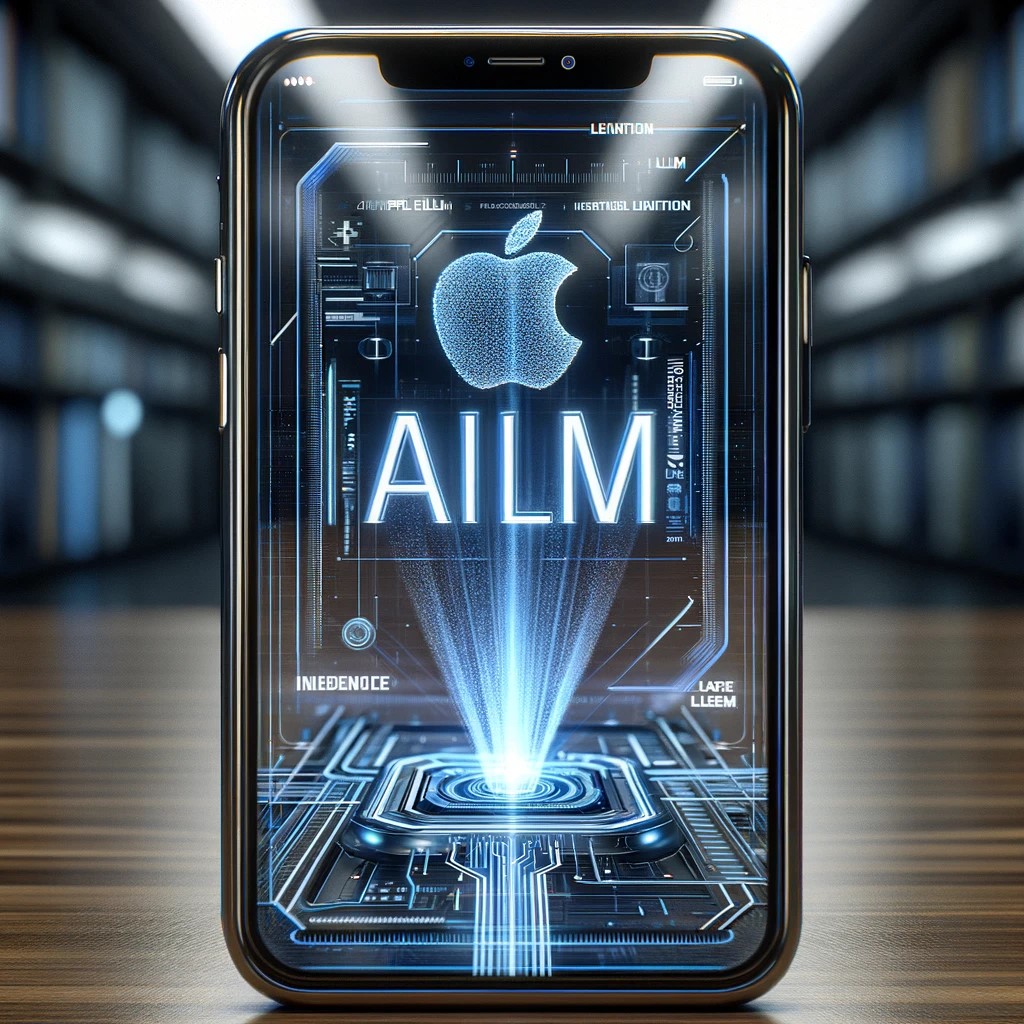The Unseen Art of Prompt Engineering: Unleashing AI’s Full Potential 101
Imagine an artist with a palette full of vibrant colors, each hue ready to bring a blank canvas to life. Now, picture that artist as you, and the canvas as the vast computational mind of an AI like GPT-4.
1280 by 731 pixels
Intrigued? You should be. Because in the burgeoning world of artificial intelligence, the most brilliant brushstroke is not coding or fine-tuning—it’s the deft art of prompt engineering.
Introduction to Prompt Engineering and Its Impact on AI
In this digital renaissance, your prompts are the brushstrokes that dictate whether AI will produce a masterpiece or just another piece of the puzzle. It’s a subtle art that, when mastered, can transform the most intricate of AI’s gears and cogs into a seamless extension of your professional workflow.
And here’s the kicker: the power is right at your fingertips, and you don’t even need to be a tech wizard to harness it.
So, buckle up!
We’re about to embark on a thrilling expedition into the heart of AI’s capabilities. We’ll unravel the mysteries of zero-shot and few-shot learning, explore the intricacies of chain and tree of thought, and even dabble in the neighborly wisdom of kNN few-shot learning. By the end of this journey, you’ll be crafting prompts that make GPT-4 sing a tune so harmonious, that it could only be described as pure, unadulterated productivity.
A heads-up: things might get a bit technical, but fear not! We’re committed to breaking it down with simple explanations and vivid, easy-to-understand examples. So even if AI isn’t your native language, you’ll be fluent in the art of prompt engineering by the time we’re done.
Understanding the Basics of AI Prompt Engineering
Ready to elevate your AI game? Let’s dive in.
Zero-Shot Learning: The Mind Reader of AI Prompting
Imagine having an assistant who doesn’t need specific training to understand your requests. That’s zero-shot learning in a nutshell. This AI wizardry handles tasks it hasn’t explicitly learned, using its extensive pre-training to make educated guesses. It’s like a well-read scholar who can infer answers to new questions based on their vast knowledge.
As I am writing this article, GPT-4 is the best AI out there in the market. We are still waiting to see if Gemini Ultra will be able to defeat it but I have already shown how Prompting GPT-4 is still better. Check it here
How Does Zero-Shot Learning Work?
Zero-shot learning relies on the AI’s ability to generalize from its extensive training across diverse datasets. It’s trained on a wide range of topics and can apply this knowledge to new, unseen scenarios.
Effectively, you are asking a machine that, conservatively, knows 40% of the world’s knowledge to understand exactly what you request after asking a 10-word question and giving you the exact answer in 7 seconds.
Yes, Chat GPT is amazing but asking that is kind of a lot wouldn’t you agree? Remember this technology is brand new. It’s Artificial Intelligence, not Artificial Wisdom. Most of the time you are not properly expressing what you actually require
Zero-Shot is something I do not recommend to anybody unless you are a clear expert on Engineering Prompting.
You might get decent results if you are coding but the rest of the information that you will receive is highly likely that it will be tasteless, generic, and just no value-add. Unless you are asking for new information on a subject you have absolutely no previous knowledge of.
Zero-Shot is only effective when we transform it into what is known as a Mega-Prompt. A prompt that has up to 3,000 words. I explain that also here.
Practical Examples of Zero-Shot Learning:
Business Strategy Assessment:
Prompt: “Evaluate the viability of a subscription-based model for an online fitness platform.”
-
AI Response: The AI, despite not being trained on this specific business model, assesses the strategy based on its understanding of subscription models, online platforms, and fitness industry trends.
-
Value: Provides a quick, informed opinion based on broad market knowledge.
Legal Query on Intellectual Property:
-
Prompt: “Explain the key considerations in protecting software intellectual property in the U.S.”
-
AI Response: Leveraging its training on legal subjects and intellectual property, the AI outlines the main steps and considerations, even though it wasn’t specifically trained in U.S. intellectual property law.
-
Value: Offers an immediate, general understanding of complex legal concepts.
Healthcare Advice for Rare Conditions:
-
Prompt: “Suggest preliminary care steps for a patient with Pontocerebellar Hypoplasia.”
-
AI Response: Utilizing its broad medical knowledge, the AI provides initial care recommendations, despite not having direct training on this rare condition.
-
Value: Assists healthcare professionals with immediate, although general, guidance, saving time in critical situations.
In each of these scenarios, zero-shot learning allows the AI to apply its broad knowledge base to provide initial insights or guidance, even in areas where it hasn’t received specific training.
On a personal note, I really like the fact that I can ask about a condition and not get the usual Google answer of “You have cancer”.
Few-Shot Learning: Crafting AI Prompts with Precision
Few-shot learning takes a step further by giving AI a handful of specific examples to guide its understanding. This approach fine-tunes the AI’s response, making it more tailored to the task at hand. It’s like giving an artist a few sketches before asking them to create a full painting.
The Essence of Few-Shot Learning:
This technique involves providing the AI with a small set of examples that act as a mini-training session. These examples help the AI to grasp the context and desired output style more accurately.
In my experience, Few-Shot is because we are entering a new realm (subject) of interaction with AI. Since we use ChatGPT 90% of the time, we kind of get a feel of how it will take it but since we are in a phase of discovery, we try to assess what limits or how is it that ChatGPT is interpreting the information and questions being asked.
For instance, the most difficult topic to talk about with Chat GPT involves politics since the 3.5 version. Also before we could really make a good case for and against a case law but now they are really putting the brakes on giving legal advice.
Few shots would be a great recommendation to try to understand the subjective value of ChatGPT in a specific context that is not necessarily a topic without real interpretations.
Real-World Applications of Few-Shot Learning:
Creating Customer Service Responses:
-
Prompt: Provide 2-3 examples of empathetic customer service responses to complaints.
-
AI Response: AI crafts responses that mirror the tone and style of the examples, offering empathetic and personalized solutions.
-
Value: Enhances customer satisfaction by generating responses that are consistently empathetic and on-brand.
Developing Marketing Content:
-
Prompt: Show examples of engaging social media posts for a new tech product.
-
AI Response: AI produces social media content that aligns with the creativity and tone of the provided examples.
-
Value: Streamlines content creation process, ensuring consistency with the brand’s voice and style.
Technical Problem Solving:
-
Prompt: Give examples of troubleshooting steps for specific software issues.
-
AI Response: AI proposes solutions for new software issues, following the logical structure and technical depth of the examples.
-
Value: Provides quick, actionable solutions, reducing downtime and improving user experience.
In each instance, few-shot learning allows the AI to adapt its responses based on the given examples, leading to more accurate and contextually relevant outputs. This capability is particularly valuable in tasks requiring a specific tone, style, or approach, making it a powerful tool for professionals in various sectors.
Advanced Techniques in AI Prompt Engineering
Chain of Thought (CoT): Structuring AI’s Thought Process
The Chain of Thought technique is about guiding AI to ‘think out loud,’ laying out its reasoning in a step-by-step manner. This method not only provides an answer but also reveals the AI’s thought process, offering transparency and deeper understanding.
Crafting Chain of Thought Prompts:
To utilize this technique, prompts should be structured in a way that encourages the AI to break down its reasoning. It’s about guiding the AI to explain ‘how’ and ‘why,’ not just ‘what.’
This is my personal favorite because people forget that we should be having a conversation with the machine. Because only through conversation can we fully understand the other side and be on the same track.
Applications and Examples of Chain of Thought:
Complex Problem Solving in Business:
-
Prompt: “Outline the steps for evaluating the feasibility of a new product launch.”
-
AI Response: AI breaks down the process into steps like market research, cost analysis, competitor analysis, and risk assessment, explaining the rationale behind each step.
-
Value: Provides a comprehensive roadmap for decision-making, enhancing strategic planning.
Educational Tutoring:
-
Prompt: “Explain how to solve a quadratic equation.”
-
AI Response: AI outlines each step of solving a quadratic equation, from setting the equation to zero to finding the roots, and explaining the mathematical principles involved.
-
Value: Offers clear, step-by-step educational guidance, aiding in learning and comprehension.
Technical Troubleshooting:
-
Prompt: “Describe the steps to diagnose network connectivity issues in an office.”
-
AI Response: AI sequentially lists troubleshooting steps such as checking cable connections, verifying router settings, and testing network signals, providing explanations for each.
-
Value: Streamlines the troubleshooting process, making it easier to diagnose and resolve issues.
In each of these scenarios, the Chain of Thought approach not only yields a solution but also provides a clear explanation of how that solution was reached. This transparency is invaluable for understanding, learning, and trust-building, especially in complex scenarios where the reasoning behind an answer is as important as the answer itself.
Let’s expand on that 1st CoT example:
Example: Evaluating a New Product Launch
Prompt: “Outline the steps for evaluating the feasibility of a new product launch.”
AI Response:
Market Research:
-
Explanation: Begin by conducting thorough market research. This involves identifying the target customer base, understanding their needs and preferences, and assessing the market size.
-
Why It’s Important: This step ensures that there is a demand for the product and helps in tailoring the product to meet market needs.
Competitor Analysis:
-
Explanation: Analyze competitors who are offering similar products. Look at their pricing, marketing strategies, strengths, and weaknesses.
-
Why It’s Important: Understanding the competitive landscape helps in positioning the product effectively and identifying potential market gaps.
Cost Analysis:
-
Explanation: Calculate the total cost of bringing the product to market. This includes production costs, marketing expenses, distribution costs, and any other relevant expenses.
-
Why It’s Important: This step determines the financial viability of the product and aids in setting an appropriate price point.
Risk Assessment:
-
Explanation: Identify potential risks associated with the product launch, including market risks, financial risks, and operational risks.
-
Why It’s Important: Understanding risks helps in developing strategies to mitigate them and prepares the business for potential challenges.
Revenue Projections:
-
Explanation: Estimate the potential revenue that the product could generate. This involves analyzing pricing strategies, sales volume projections, and market penetration rates.
-
Why It’s Important: Revenue projections are crucial for assessing the potential profitability of the product and for making informed business decisions.
Feedback and Testing:
-
Explanation: Conduct product testing and gather feedback from potential users. This can include focus groups, surveys, or product demos.
-
Why It’s Important: Feedback helps in refining the product and ensuring that it meets customer expectations before the full-scale launch.
Go/No-Go Decision:
-
Explanation: Based on the data gathered from the above steps, make a decision on whether to proceed with the product launch.
-
Why It’s Important: This final step ensures that the decision to launch the product is based on thorough research and analysis, minimizing the risk of failure.
See how important it is to know exactly what the machine is thinking about. The possibility that it is thinking of a lot of different subjects for the same question is actually a certainty after using ChatGPT for pretty much every daily operation.
One of the main constraints users have is that they want a simple, straightforward answer to a massively complex and specific question or scenario.
Can you see how easy it is to go from a small conversation that has no value-add to a string of conversations that creates massive values and gives you the possibility to see your blind spots?
Extra tip: Ask ChatGPT for feedback when you are having a conversation with it. Ask for guidance or is there a better way to approach the current conundrum you are having? It’s wonderful.
Tree of Thought (ToT): Branching Out AI’s Problem-Solving Capabilities
The Tree of Thought approach takes the linear reasoning of the Chain of Thought and expands it into a multi-branch exploration of solutions and ideas. It’s particularly effective for complex, multifaceted problems where multiple perspectives or solutions are beneficial.
Healthcare Treatment Plans for Type 2 Diabetes
Prompt: “Discuss different treatment approaches for type 2 diabetes and their implications for patient lifestyle.”
AI Response:
Lifestyle Modification:
-
Approach: Emphasizes changes in diet, increased physical activity, and weight management.
-
Implications: Positively impacts overall health, and reduces reliance on medication, but requires significant patient commitment and lifestyle changes.
-
Pros: Improves cardiovascular health, aids in weight loss, and can be very effective in managing blood sugar levels.
-
Cons: Requires sustained lifestyle changes which can be challenging to maintain long-term.
Medication Management:
-
Approach: Utilizes medications such as Metformin, Sulfonylureas, or insulin therapy.
-
Implications: Easier to adhere to than lifestyle changes, but may have side effects and does not address the root cause of diabetes.
-
Pros: Effective in controlling blood sugar levels, quick to implement, and requires less patient lifestyle change.
-
Cons: Potential side effects, risk of dependency on medication, does not improve underlying insulin resistance.
Surgical Options (Bariatric Surgery):
-
Approach: Surgical procedures to reduce the size of the stomach or bypass part of the small intestine.
-
Implications: Can lead to significant weight loss and improvement in diabetes symptoms, but involves surgical risks and requires a lifelong commitment to dietary changes.
-
Pros: Often leads to substantial and rapid improvement in blood sugar control, and may reduce the need for medication.
-
Cons: Invasive, with risks associated with surgery and potential for nutrient deficiencies post-operation.
Integrated Approach:
-
Approach: Combines elements of lifestyle changes, medication, and possibly surgery.
-
Implications: Tailored to individual patient needs, offering a balanced approach to management.
-
Pros: Addresses diabetes from multiple angles, potentially more effective in long-term management.
-
Cons: Requires careful coordination and patient adherence to a more complex treatment plan.
As we can see when we try to get into a ToT type of conversation, we are opening multiple universes where we are going to have quite different conversations and really immersive ones with different types of information that might eventually lead us to a real value-add result.
The idea of ToT lies in that just as there are many keys to open a door, there are many ways to achieve a great result.
Conclusion: The Future of AI Prompt Engineering
I want to stop here and leave this article to be a 101 on techniques for using Chat GPT. I will be writing a second more technical article that will be talking about the missing techniques I did not discuss here: kNN and Ensemble w/ choice shuffle.
I would like to remind everyone that this article comes from a hard look into MedPrompt+, an article made by Microsoft’s Engineers that you can find here:
Thank you so much for reading me and I really hope you got value out of this great article
See you on the next one!







